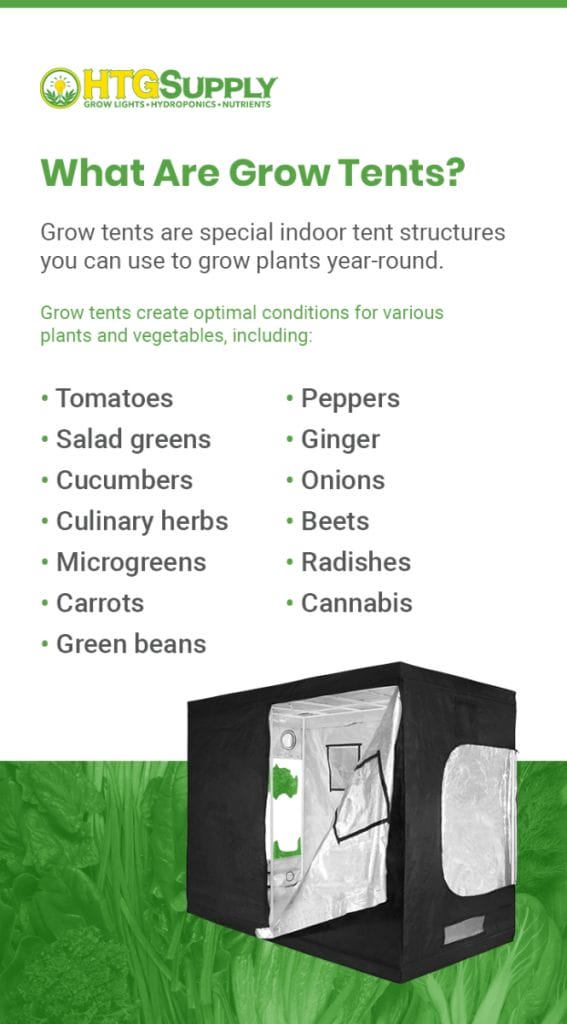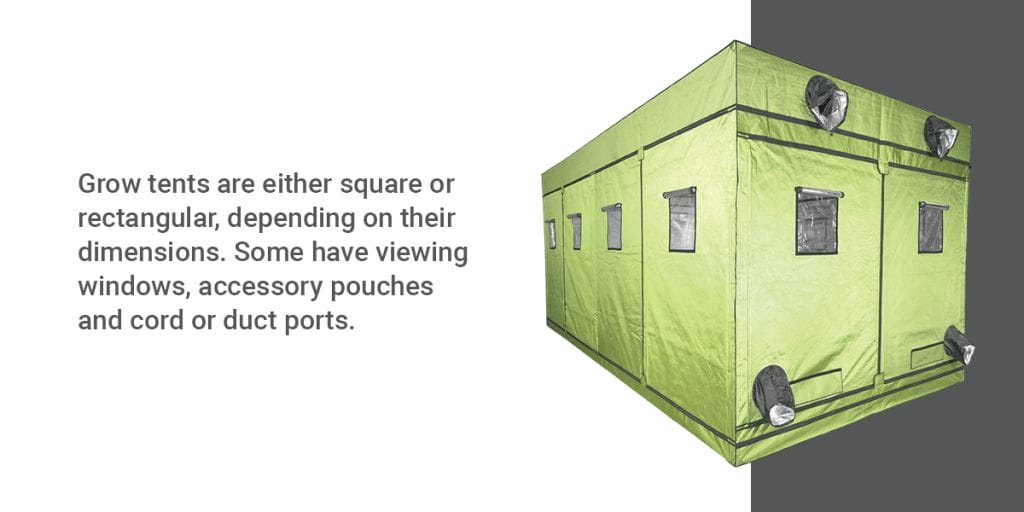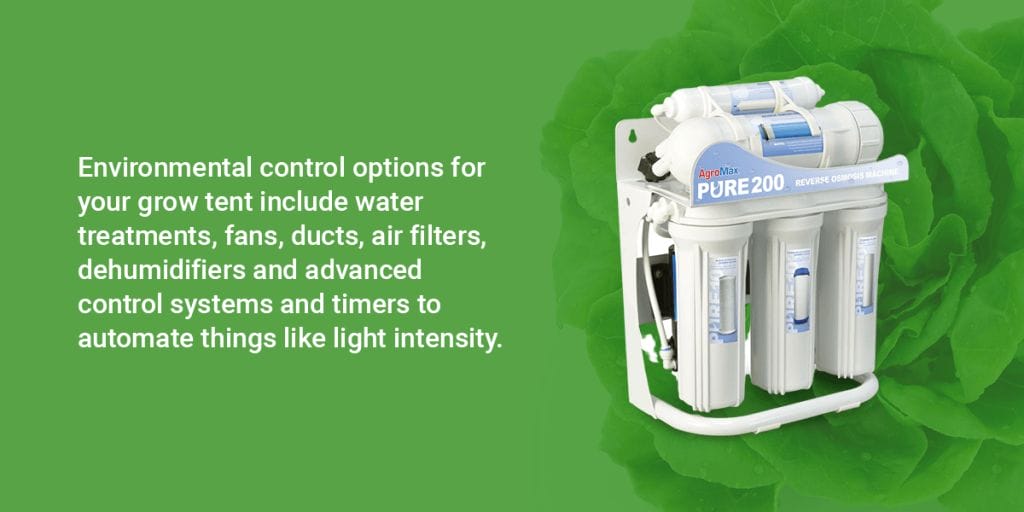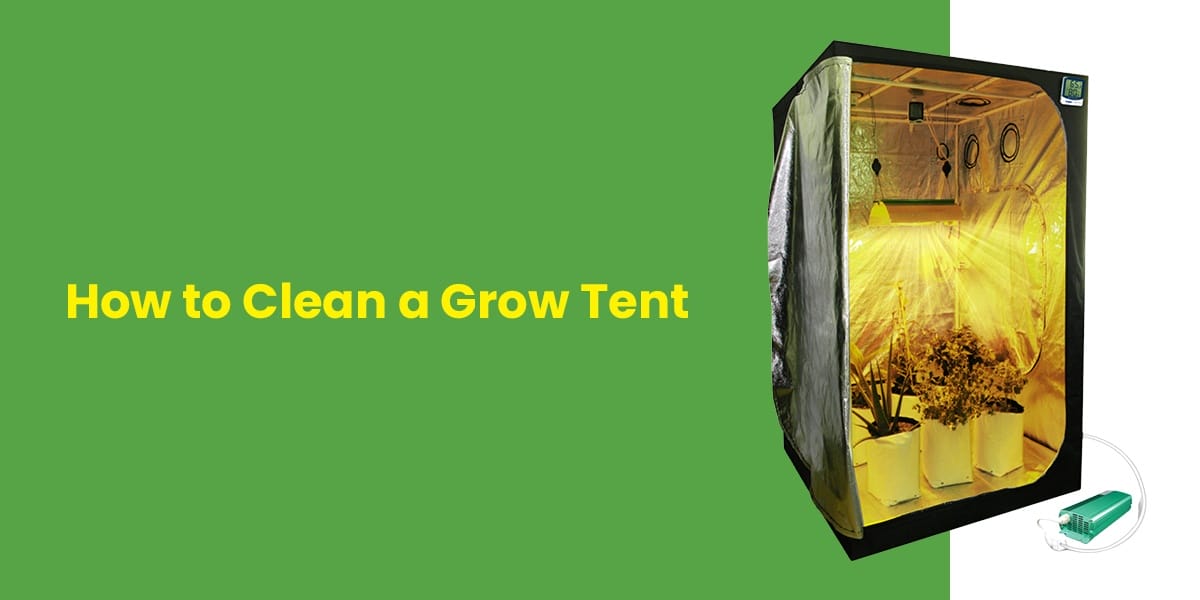Changing light, extreme weather, temperature fluctuations and limited or non-existent outdoor growing space are common problems that plague plant growers of all crop types. The solution? Indoor grow tents.
An indoor grow tent will protect your crop and help you create the best conditions for strong, healthy plants. Different sizes of grow tents are available for all types of crops, no matter how large they can grow. This article will teach you how to choose the right size to grow tent for your crop and answer some frequently asked questions about this indoor growing method.
What Are Grow Tents?
Grow tents are special indoor tent structures you can use to grow plants year-round. They’re a popular choice for commercial plant suppliers, hobbyists and cooks who want a consistent supply of fresh, homegrown ingredients. Tents come with reflective interiors and different customization options, like light, temperature and humidity control, that let you create the ideal environment for your crop. They are similar to grow cabinets but trade the cabinet’s subtlety for more growing space.
Grow tents create optimal conditions for various plants and vegetables, including:
- Tomatoes
- Salad greens
- Cucumbers
- Culinary herbs
- Microgreens
- Carrots
- Green beans
- Peppers
- Ginger
- Onions
- Beets
- Radishes
Indoor grow tents also protect plants from pests and inclement weather and might be your only growing option in urban areas or small rental homes.
How Big of a Grow Tent Do I Need?
Before making any assumptions or calculations on your own, check your grow tent manufacturer’s label or user manual for specific space instructions. If none are available for your chosen crop, consider the following factors when creating your plant layout.
Plant Type, Size and Requirements
Your crop and desired yield are the most significant determinants for the grow tent you choose:
- Plant type: Tomatoes have far different growing requirements than peppers, and both are unique from culinary herbs or carrots. The type of crop you’re growing is the most important factor to consider when selecting size — what do experts recommend for your chosen plant or strain? Most seeds or starter plants come with specific spacing instructions. This will tell you what size container you need to plant your seeds and how far apart those containers should be, which is how you will determine the best size for your grow tent.
- Size at full-growth: How do you anticipate your crop growing? What are the maximum height and width each plant can reach? Size also includes the amount of space between plants and containers as they grow horizontally. You may have to use plant training methods or alter the grow light intensity to control your plant’s height.
- Growing requirements: Consider individual plant requirements, like temperature, humidity level, drainage needs and amount of light. While you may be able to grow some plants or strains together in a single grow tent, only do so if they have similar or matching growth and space requirements.
Your Existing Space
Many indoor growers choose a grow tent because their current living situation doesn’t accommodate outdoor crops. Plus, growing plants indoors is the easiest way to control the quality and yield. Consider your current space restrictions before choosing a tent or deciding how large a crop you want to produce. For example, your ceiling height may determine how tall a grow tent you choose, while available floor space and square footage may restrict how wide your tent should be.
Growing Method
Some crops and plant varieties have different growing techniques to choose from, and the method you choose plays a vital role in the size of the grow tent you invest in. For example, you can grow indoor tomatoes either hydroponically or in soil. Some types of tomatoes are best grown from the ceiling down, while others do better with firm roots embedded in a container.
Flowering herbs and beans are other crops with various growing and plant training options. Two popular low-stress training (LST) methods are the Sea of Green (SOG) and Screen of Green (ScrOG) methods:
- SOG: Sea of Green involves using artificial light and timing to grow your entire crop vertically at the same pace. Experts recommend roughly one plant per square foot of space.
- ScrOG: The Screen of Green method lets your crop grow vertically until they reach the installed screen, then they start growing horizontally. Space recommendations are usually one plant for every 4 square feet of tent space.
High-stress training methods, like super cropping, usually require about 2 square feet per plant.
Grow Tent Size Options
Grow tents are either square or rectangular, depending on their dimensions. Some have viewing windows, accessory pouches and cord or duct ports. Sizes range from small enough to fit comfortably in a corner or countertop to a closet-sized tent or a tent large enough that it requires its own growing room.
Some common tent sizes are:
- 2 feet by 4 feet
- 4 feet by 4 feet
- 4 feet by 8 feet
- 4 feet by 10 feet
- 5 feet by 5 feet
- 10 feet by 10 feet
This list is not exhaustive. Many grow tents are available in smaller and larger sizes or in different shape configurations to suit your needs. HTG Supply also carries commercial-sized indoor grow tents for larger gardens. Taller tents can accommodate plants that grow taller or grow vertically, while wider tents let you fit more pots and containers inside. As you calculate how much room you need for each plant, don’t forget to factor in the size of the plant container and whether that container holds multiple plants inside, like a tray.
Frequently Asked Questions About Grow Tents
Choosing the right grow tent might seem like a daunting task, but it doesn’t have to be. These are some questions we hear most frequently about shopping for grow tents.
Why Does Tent Size Matter?
You need to have enough room for all growing containers, and the tent space should be large enough to accommodate the final growth height and width for your entire crop. Plants that do not have enough room to grow may become stunted or experience nutritional deficiencies that interfere with their health and quality. Poorly sized tents are also prone to overheating and excess humidity.
Though undersized tents certainly present their challenges, the answer is not to choose the largest tent available. Oversized tents will eat up more of your budget that you could instead put toward other growth improvements, like better lighting, higher quality seeds or your heating and cooling bills. Larger tents may also be too big to fit in your home.
Tent size will also help you determine which accessories you need and how many of each to invest in.
What Accessories Do I Need?
Grow tent accessories, such as grow lights and plant nutrients, help you replicate and improve outdoor conditions in a more controlled environment. Some supplies, like safety equipment and odor control, can protect you and your home. Never use outdoor gardening equipment with your indoor grow tent.
HTG Supply offers several tent accessories to optimize your indoor garden:
- Grow lights: While you may be planning to repurpose a shop light you have on hand for your grow tent, an LED grow light offers more control and better results. You can install these energy-efficient lights directly over your crop and shine the necessary amount of light to promote photosynthesis. Remember to place your grow tent near an outlet so you can plug in the light.
- Environmental control:Environmental control options for your grow tent include water treatments, fans, ducts, air filters, dehumidifiers and advanced control systems and timers to automate things like light cycles. If you’re worried about your crop’s smell infiltrating the rest of your home, odor control systems, carbon filters and ozone generators can help keep it contained.
- Growing nutrients: Plants need different nutrients at different stages of growth. HTG Supply carries base nutrients, enhancers, supplements and conditioners, as well as several organic options. Always research your crop carefully before selecting your growing nutrients — add too much of the wrong kind, and you risk sabotaging your efforts.
- Growing containers: Grow tents can accommodate far more than the standard garden pot. You can also utilize saucers and trays, fabric growing beds, grow bags, hydroponic containers and air pruning pots.
- Harvesting tools: Drying nets, bud trimmers and other harvesting tools help you collect, process and package your crop.
- Ties and supports: Some plants need some additional support while growing. Stakes, clips, ties, cages and trellis netting are cost-efficient options for helping plants grow strong in your chosen direction.
- Safety equipment: Sanitation is a critical part of growing indoor plants, as it keeps bugs and other pests away from your crop. Other sanitary supplies, like gloves, can protect your skin from abrasive leaves and prevent cross-contamination.
How Many Plants Can You Fit in a 10-by-10 Grow Tent?
Designed to fit large indoor crops, 10-foot-by-10-foot grow tents are among the largest on the market. They’re usually a top pick for year-round growers, those with extensive hydroponic gardens and planters growing crops that require ample vertical and horizontal space.
The number of plants you can fit into a 10-foot-by-10-foot tent depends on several factors, including:
- The type of plant you’re growing.
- What height you want the plant to reach.
- The size of your growing containers.
- Manufacturer recommendations.
How Big of a Grow Tent Do I Need for 4 Plants?
If you consider most plants need at least 1 to 2 square feet per plant, a 4-foot-by-4-foot grow tent is a good place to start if you’re only growing a few plants or want to give indoor growing a try before making a larger investment. We recommend this tent size for up to 6 medium size plants. As always, specific plant requirements vary.
For instance, basil plants typically need 1 or more feet of growing space, while tomatoes need about 18 inches. Alternatively, four tall plants will require a taller grow tent, while four wide, ground-covering plants need more width.
How Many Plants Can Fit Into a 4-by-8 Grow Tent?
With a 4-foot-by-8-foot tent, you can fit a few more plants than you would in a 4-foot-by-4-foot tent, assuming they’re all about the same size. The extra feet are added to the width, providing the same height but additional floor space to fit more containers. We typically see this tent size used for up to 12 medium-large plants.
How Do I Prepare My Space for a Grow Tent?
Before choosing and assembling your indoor grow tent, you need to prepare the room where you’ll put it. The goal is to create a clear, safe space where no external factors — like pets, light, air conditioning units and pests — can interfere with the growing process. Some growers find it helpful to design a blueprint of their set-up, especially if you’re investing in multiple grow tents or an extra-large unit.
These steps will help you prepare:
- Declutter your space: Start by decluttering your chosen room. Remove as many items as you can, and clear a path to and from your water source so you can water your plants more easily when the time comes. Sweep the floor surrounding your grow tent and pick up any trash, debris or food scraps that might attract bugs or rodents who could infiltrate your tent.
- Note the environment: Note the room’s current environment. Is there a lot of artificial air movement from a fan or overhead vent? Are there hot spots or cold spots throughout the room? What about natural and artificial light? While your grow tent can protect plants from some outside interference, it’s best to eliminate as many of these factors as possible, so you’re starting with a clean slate. Otherwise, some grow tent accessories, like temperature control units and dehumidifiers, might have to work extra hard, spiking energy costs.
- Protect your tent: Protect your tent from kids and pets by installing door locks, removing pet doors and designating the area as a tent-only space. If you’re placing your tent in a common area, like the living room, consider erecting a barrier around the parameter to keep wandering eyes and paws from unwanted entry.
- Consider odor control: Taking steps to control your plant’s smell is a good idea if you live with roommates, have sensitive allergies or just want to keep your hobby more subtle.
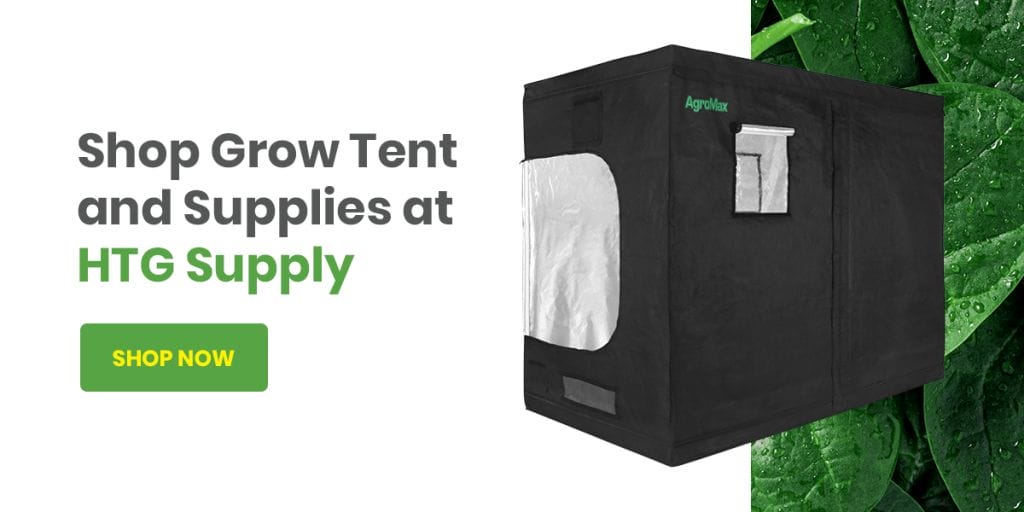
Shop Grow Tent and Supplies at HTG Supply
As you’ve learned, what size grow tent you need depends on multiple factors, including plant type, crop goals and required growing conditions. The team at HTG Supply is happy to help you make the best decision for your crop — just give us a call at 1-866-710-GROW or contact us online to learn more. HTG Supply is your go-to resource for indoor grow tents, accessories and growing supplies. We are proud to offer top-quality products backed by some of the fastest shipping speeds in the industry.
Browse our online inventory or find a location near you to start shopping for your indoor growing supplies today!
